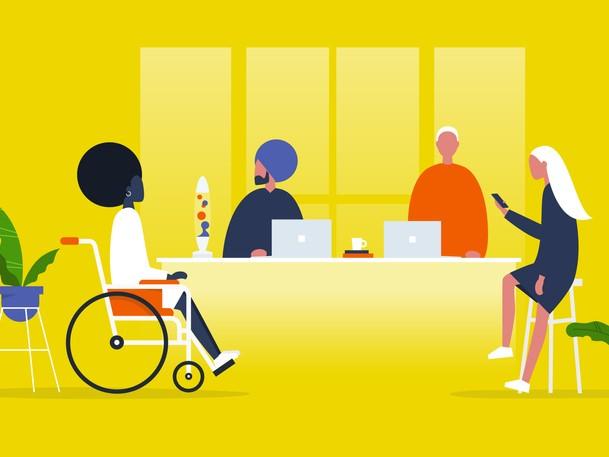A blended approach is becoming increasingly important within further and higher education. As Steve West, the president of Universities UK for 2022 notes, “Students want blended learning, but we still have a long way to go.” The University of Manchester’s flexible learning programme is exploring how to best support staff in developing well-designed resources and activities that enhance learning across different delivery modes, whether students study on campus or online. This covers everything from exploring how digital materials can augment on-campus learning, to how we can develop transnational programmes and ensure our colleagues have the tools and pedagogical knowledge to meet the needs of current and future learners.
Dual teaching is a form of blended learning that enables on-campus and online learners to learn together at the same time via different delivery modes. In the last academic year 2021/22, I provided support for colleagues in relation to dual teaching. Now, as academic lead for assessments for the flexible learning programme, I develop pilots and support blended and flexible learning across the institution.
- THE Campus collection: Higher education goes hybrid
- Classroom management strategies to enhance hyflex learning
- How to design effective reinforcement activities for activeflex courses
When dual teaching, it can be difficult to ensure students joining online have an equitable experience compared to those learning face-to-face on campus. However, having trained colleagues, taught undergraduate and postgraduate students, and reflected on this approach, I can confirm it is effective for student development so long as certain issues are addressed within your planning.
As a scholar and enthusiastic sharer of teaching and learning practice, my advice aims to support your preparations for synchronous dual teaching classes next year.
Do | Do not |
| Make it clear to the students if this is your first experience of dual teaching. | Pretend to be experienced and at ease, if you are nervous or uncomfortable with the technology. |
| Use dual teaching for small group seminars. It does not matter what the mix is (eg, 10 online and 20 in the room) so long as you know the rough total in attendance. | Use dual teaching for a lecture. |
| Make guidance and support available for students on the technology they will be using. | Presume the students or staff will know how to use the technology. |
| Inform students about the dual teaching system in advance so they know their peers will attend online and in person. Clarify your expectations of their engagement in advance. | Presume the students will know it is a dual teaching session, or how they are required to engage in a dual teaching classroom. |
| Prepare activities in which small group discussions can feed into a single online space or repository. For example, using Microsoft Teams, a shared online document, or a virtual learning environment. | Prepare activities that do not support a review of whole class discussion. All students should be able to review discussions from the class as a whole. |
| Have a contingency plan in case the technology goes wrong, whether this is having an extra laptop or WiFi signal available. Make sure all potential risks are clear and contingencies are feasible. | Ignore potential risks in dual teaching: technology failure, poor WiFi, online learner location issues, background noise or distractions and on-campus teaching spaces being used. |
| Ensure there are multiple camera angles which are clear to all the students. This is important for those learning online and on campus. When you are talking to the whole class ensure the online camera only faces you. When facilitating group discussion use a camera facing the room. | Leave online students looking at a blank wall or listening to disembodied voices. |
| Have the online students displayed on a laptop or screen(s) where the on-campus students can all see them. | Show the online students on the main computer in the room. The main screen is often recorded and it makes those online the focus of the class. Having them on a laptop on a table supports parity of participation and engagement in class. I found that most online students turned off their cameras when on the large screen, because they didn’t like being on there. I had to nurture them to turn on their cameras and remind them they were not on the ‘big’ screen, but on my laptop. |
| Support private discussion in small groups both in the room and in the online space. | Record any of the private group discussions. |
| Keep discussion groups within their location/modality. | Mix online and on-campus learners in small group discussion because this does not aid the student experience. |
While contingencies are important for any lesson plan, I found that certain on-campus discussions took time to explain to the online learners. The commotion among on-campus students when a pizza restaurant offered free food outside the classroom, for example, needed explanation to those who were joining online. Bear in mind the very different experiences of the on-campus and online students during each class.
I sincerely hope the straightforward advice above supports your plans for dual teaching. It requires planning, but preparation should not take more time than the usual lesson plans for on-campus and online learning.
Miriam Firth is senior lecturer and academic lead for assessments in the flexible learning programme at the University of Manchester.
If you would like advice and insight from academics and university staff delivered direct to your inbox each week, sign up for the Campus newsletter.




comment